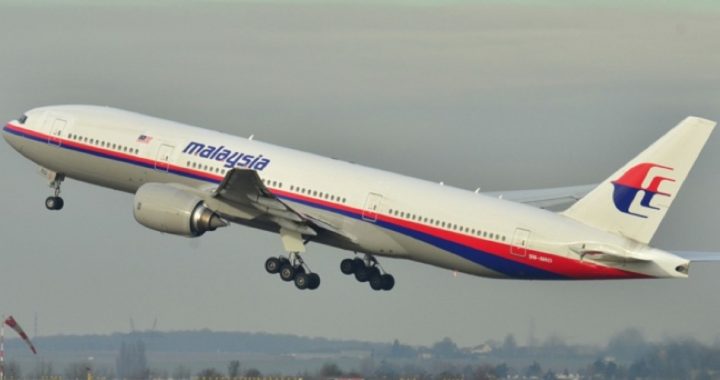
International teams continue to search for Malaysia Airlines Flight MH370, which stopped all radio contact with air traffic controllers soon after it left Kuala Lumpur, Malaysia, on March 8. While aviation experts have pieced together parts of the puzzle, a full explanation of what happened to the missing flight remains to be revealed.
As we noted in our article on March 10, Flight MH370, a Boeing 777-200 operated by an all-Malaysian crew of 12, was destined for Beijing with 227 passengers of more than a dozen nationalities aboard. The largest number of passengers — 154 — were from China, with one passenger on the manifest listed as having “China Taipei” nationality. Because of this, the Chinese government in Beijing has demanded that Malaysia do more to find the missing aircraft.
A deputy Chinese foreign minister demanded “more thorough and accurate information” after Malaysian Prime Minister Najib Razak said on March 15 that the missing flight might have flown beyond the then-current search area.
A strongly worded commentary posted by China’s official Xinhua News Agency accused both Malaysia and the United States of delaying the release of pertinent information. “Given today’s technology, the delay smacks of either dereliction of duty or reluctance to share information in a full and timely manner,” Xinhua said, adding that Malaysia “bears inescapable responsibility.”
China’s accusatory tone aside, it is unlikely that anyone except those aboard Flight 370 knows what really happened. The plane’s disappearance remains one of the great mysteries of aviation history, perhaps the most mystifying since the disappearance of five U.S. Navy TBM Avenger torpedo bombers during a training flight originating at Naval Air Station Fort Lauderdale, Florida, on December 5, 1945. As bits and pieces of information are analyzed, several theories have been formed about the fate of the missing airliner.
The New York Times reported that Malaysian Defense Minister Hishammuddin Hussein, who is serving as the nation’s acting minister of transportation, said at a news conference on March 16 that Flight 370’s ACARS (Aircraft Communications Addressing and Reporting System) had been “disabled” at 1:07 a.m. on March 8, which was before someone in the cockpit gave a verbal sign-off to air traffic controllers in Subang Jaya, Malaysia at 1:19 a.m., saying, “All right, good night.” Such a time frame would suggest that the pilots (whether willingly or having been coerced) had turned off the system.
However, noted reports by both the Times and Reuters, Malaysia Airlines chief executive Ahmad Jauhari Yahya told a news conference on March 17 that it was unclear exactly when ACARS had been disabled, an assessment that appeared to contradict the weekend comments by the defense minister.
The timeline indicating that the 1:19 a.m. “all right, good night” message was spoken after ACARS was shut down reinforced suspicions harbored by many that the plane was hijacked, either by the crew or an unknown passenger or passengers threatening the crew. However, Ahmad Jauhari’s Monday testimony changed his government’s take on that sequence of events from being a known fact to an uncertainty.
“Initial investigations indicate it was the co-pilot who basically spoke the last time it was recorded on tape,” Ahmad Jauhari said during the press conference, when asked who authorities believed had spoken the final words made as the plane was about to leave Malaysian airspace and just before it was to enter Vietnamese airspace.
“We don’t know when the ACARS was switched off after that,” Ahmad Jauhari said. “It was supposed to transmit 30 minutes from there [at 1:37 a.m.], but that transmission did not come through.”
The Times reported that the plane’s transponder, a separate system that communicates with ground-based radar, ceased working at 1:21 a.m.
A March 17 CNN report summarizing the plane’s timeline noted that the Malaysian government said that its civilian radar lost contact with the plane completely about 1:30 a.m. However, military radar continued to track the plane until 2:15 a.m. off Malaysia’s west coast, hundreds of miles off course.
Electronic signals between MH370 and satellites continued to be exchanged for several hours after that. At 8:11 a.m., a satellite made the last electronic connection, known as a “handshake,” with the plane. A March 14 report in the Sydney Morning Herald also noted, “The ‘pings’ indicated that the aircraft’s maintenance troubleshooting systems were switched on and ready to communicate with satellites as needed. But no data links were opened because the companies involved had not subscribed to that level of service from the satellite operator.”
While the satellite data tells us that Flight 370 was still transmitting a signal eight hours after taking off, it does not tell us where the plane was.
The big question remaining, of course, is: Where is Flight 370?
When it was last tracked by Malaysia’s military radar, the plane was over the Malacca Strait, a busy waterway that separates the western coast of Malaysia from Indonesia’s Sumatra island. If the plane had continued westward, it would have crossed Sumatra into the Indian Ocean. In a news conference held on March 15, Malaysia’s Prime Minister Najib Razak said that aviation authorities in Malaysia and other countries had determined that the plane’s last satellite communication came from one of two flight corridors: a northern one stretching approximately from the Kazakhstan-Turkmenistan border to northern Thailand or a southern one stretching approximately from Indonesia to the southern Indian Ocean.
“As the two new corridors involve many countries, the relevant foreign embassies have been invited to a briefing on the new information today by the Malaysian Foreign Ministry and the technical experts,” the prime minister said.
Aircraft do not fly randomly, but follow such corridors — highways in the sky — guided by ground-based radio transmitter navigational aids.
Because the northern route would have taken the plane through several countries’ airspace — including China’s, which has sophisticated air defense systems — it is unlikely that it could have done so without being detected.
Consequently, Malaysia’s Transport Ministry announced on March 17: “Today, the Royal Malaysian Navy and the Royal Malaysian Air Force will deploy their assets to the southern corridor.”
U.S. authorities believe it is likely that the aircraft crashed into waters outside the reach of radar south of India, an unidentified U.S. official told CNN on March 17.
New Straits Times, a Malaysian newspaper, reported on March 17 that Australian Prime Minister Tony Abbott has pledged to help in the search for the plane. “In the light of developments in the investigation [Najib] requested that Australia assumes responsibility for co-ordinating that part of the search which is now focusing on the southern Indian ocean” and “Australia will make additional maritime surveillance aircraft available to extend the effort to locate MH370.”
Reuters on March 17 cited a statement made by Malaysian Acting Transport Minister Hussein that in addition to the Malaysian navy and air force, U.S. P-8A Poseidon surveillance aircraft were being sent to Perth, in Western Australia, to help search the Indian Ocean.
If Flight 370 did indeed crash into the Indian Ocean, it would be expected that a large amount of debris would (or will) be found floating on the surface. In a 1991 article for The New American about the loss of KAL 007 off the coast of Siberia, author Robert Lee noted that on November 28, 1987, a South African Airways 747 with 160 persons on board crashed in the Indian Ocean near the island of Mauritius. Debris was scattered over 150 square miles. The next day, UPI reported: “Four badly mutilated bodies were recovered Monday [November 30] … increasing to nine the number of victims recovered.”
According to a November 29, 1987 report in the Washington Post, South Africa’s transport minister “told reporters at a crisis command post at Johannesburg’s Jan Smuts Airport that passengers in another South African Airways jumbo jet carrying investigating officials to Mauritius had also spotted wreckage, including suitcases and an empty rubber life raft.”
One year after the crash, it was announced that the world’s deepest ocean search for wreckage had located “a large piece” of the jet on the ocean floor at 12,000 feet.
Granted, the Indian Ocean is a very large place, and covering it thoroughly may take some time. But satellite photography has advanced greatly since 1987 and now covers virtually the entire surface of the globe. If no debris is found, it raises serious questions about whether theories that Flight 370 crashed in the southern Indian Ocean are correct or not.
If Flight 370 was hijacked, as seems likely, given its controlled change in direction, it remains to be determined who was responsible and what their motivations might have been. In an opinion piece posted March 17 by the Qatar-based al Jazeera network, Tom Ballantyne, the chief correspondent of the Hong Kong-published Orient Aviation magazine, wrote that, whichever theory about the fate of Flight 370 proves to be correct, “none of this happened by accident. Human hands, and ones familiar with the operation of the aircraft, were involved. Whether this was the pilot or pilots, or the crew operating under duress, remains to be seen.”
Then Ballantyne revealed important information that the major media has not widely reported so far:
But there is mounting evidence that the flight Captain [Zaharie Ahmad Shah], a man with years of experience, was a political fanatic, a supporter of Malaysian Opposition leader Anwar Ibrahim. He had become increasingly angry about the Malaysian government’s treatment of Ibrahim, including his jailing on what many believed were “trumped up” charges.
In contrast with the above description of Shah, ABC News on March 14 reported that “both pilots [Shah and first office Fariq Abdul Hamid] are Malaysian men whose behavior had no obvious red flags” and noted that Shah was “a married father of three grown children with more than 18,000 hours of flying experience in the air … an affluent aviation buff, with a home in a gated community.”
While Ballantyne did provide what he believes is important information about Flight 370’s pilot, he did not suggest that this was evidence the pilot orchestrated a hijacking of the flight. He, instead, devoted most of his article to what he believes are deficient procedures in the airline industry that should be addressed to make it easier to identify and locate missing planes. Among these are whether pilots should be provided the ability to turn off transponders and other communications devices. He also believes that instead of being stored in the famous “black boxes,” “In today’s world it is feasible for the information they collect to be transmitted in real time to ground stations.”
While it is almost certain that Flight 370 was deliberately diverted from its flight plan and had its communications systems silenced to hide its position, little else is yet known with certainty. Not even the motivation of the hijackers is understood. Unlike the 9/11 hijackings, no one has taken credit for the abduction of Flight 370 or gained publicity for a cause. Was there a struggle onboard, similar to the one in which passengers on United Airlines Flight 93 attempted to take back control of the hijacked plane on 9/11, only to have it crashed into the ground in Pennsylvania? If a similar scenario had played out over the Indian Ocean, there might be little evidence to let us know.
The world is waiting for answers to solve the mystery behind Flight 370. Those who seek assurance that travel is safe and secure hope that such answers will soon be forthcoming.
Related article: Search for Malaysia Airlines Flight 370 Yields Few Clues



